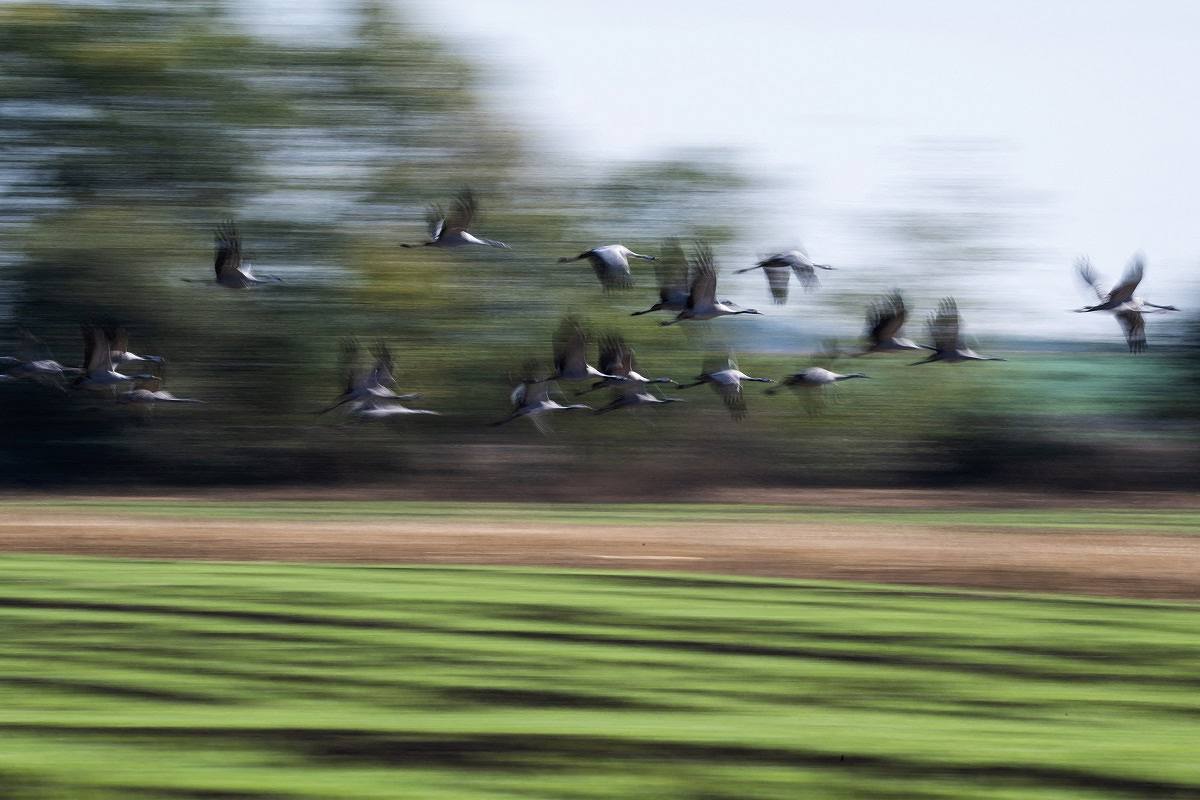
Cranes fly over a field at Hungary’s vast Hortobagy National Park, Hungary, on Nov. 1.
17:51 JST, November 15, 2023
HORTOBAGY, Hungary (Reuters) — The plains of eastern Hungary have seen a record number of cranes staying over in unusually warm weather this autumn, with more than 194,000 roosting in the shallow marshes at a time, with no inclination to leave for Africa.
Hungary’s Hortobagy National Park is one of the most important staging areas globally for the common cranes, which stop over there on their flyway from northern Europe to Africa, to feed and gather strength before the long journey.
This autumn their stopover does not seem to end.
Attila Szilagyi, a nature protection guard at the park, said this was due to warm temperatures of above 20 C in October, and because there was plenty of food available this year on nearby corn fields, contrary to 2022 when a drought hit the region.
“And there was also a positive natural phenomenon, as we had winds blowing from the south so the cranes felt no inclination to start off on their journey southbound, as they had a safe roosting area here, with food, and favorable weather,” Szilagyi said, using his binoculars to observe the large birds, which can have a wingspan of around 2 meters.
“The normal migration cycle of the cranes lasts from mid-September until end-October, early November. Now it’s November already, and the cranes are here in masses.”
Szilagyi said that as winters get milder, some flocks of cranes have been using the southern parts of Hungary near the Serbian border as a wintering ground.
The number of cranes staging in the Hortobagy National Park area has been increasing since the 1980s. The cranes roost in undisturbed large drained fishponds and shallow marshes. After sunrise they set off to feed on nearby cornfields, where they can find waste seeds after the harvest.
Late in the afternoon, they return to the marshland to roost for the night and socialize, as this is when young cranes learn crucial life skills and behaviors.
"Science & Nature" POPULAR ARTICLE
-

Genome Study Reveals Milestone in History of Cat Domestication
-

Big Leap in Quest to Get to Bottom of Climate Ice Mystery
-

Japan Set to Participate in EU’s R&D Framework, Aims to Boost Cooperation in Tech, Energy
-

Paws on Parade: Nairobi’s Dogs Dazzle at ‘Pawchella’
-

Japan’s H3 Rocket Failed in Latest Launch, Says Official
JN ACCESS RANKING
-

Tokyo Economic Security Forum to Hold Inaugural Meeting Amid Tense Global Environment
-

Keidanren Chairman Yoshinobu Tsutsui Visits Kashiwazaki-Kariwa Nuclear Power Plant; Inspects New Emergency Safety System
-

Imports of Rare Earths from China Facing Delays, May Be Caused by Deterioration of Japan-China Relations
-

University of Tokyo Professor Discusses Japanese Economic Security in Interview Ahead of Forum
-

Japan Pulls out of Vietnam Nuclear Project, Complicating Hanoi’s Power Plans























